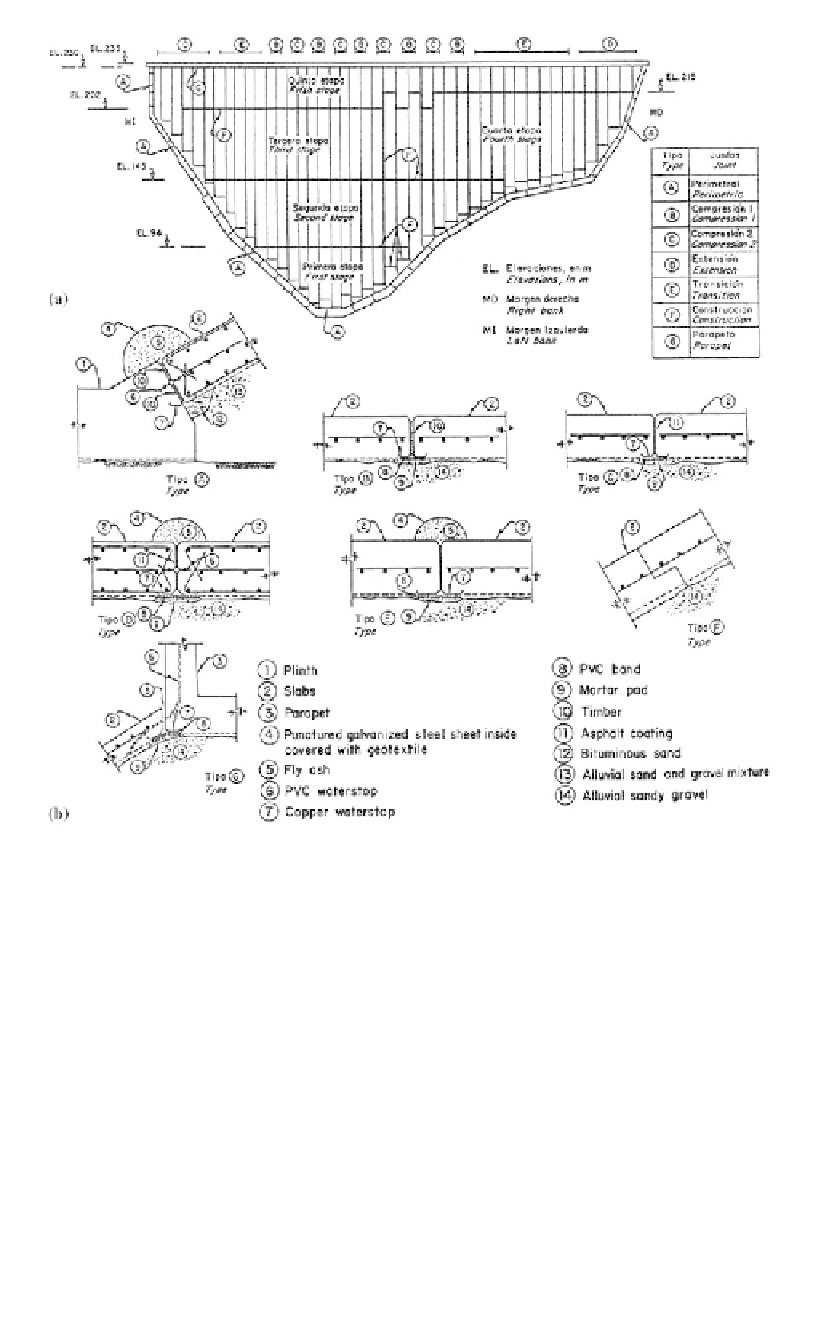Environmental Engineering Reference
In-Depth Information
Figure 15.18.
Joint details for Aguamilpa dam (a) elevation showing joint layout (b) joint details
(Valencia and Sandoval, 1997).
leakage, by potentially eliminating water stops and anti-spalling steel. The method may
also have contributed to the face cracking at Khao Laem (Materon and Mori, 2000). This
is discussed in Section 15.6.
For Aguamilpa dam different details were used, depending on whether the joints were
expected to be in tension or compression as shown in Figure 15.18.
15.3.3
Perimetric joint
15.3.3.1
General requirements
Instrumentation of CFRDs has indicated that compressive strains develop in more than
90% of the face slab due to settlement of the rockfill.
When the reservoir is filled there is further displacement of the face slab, which leads to
closing of vertical joints over most of the slab and opening of the perimetric joint and
those joints near the abutments. The face slab also pulls away from the plinth, and offsets

